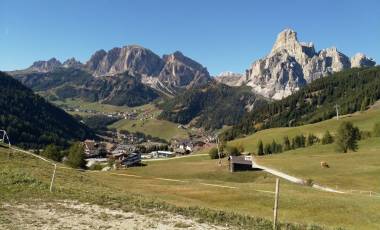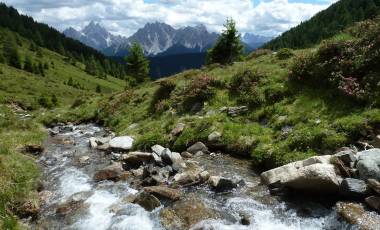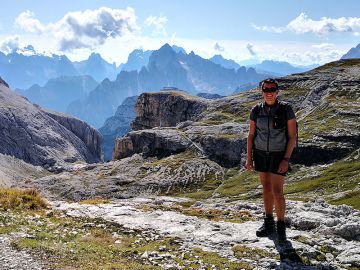
Your Guide to Hiking in the Italian Dolomites
Located in northeastern Italy, the Dolomites have been hailed as “the most beautiful mountains in the world” by one of the world’s leading climbers, Reinhold Messner. Messner was not only the first person to climb Mount Everest alone, but also the first to ascend all 14 of the world’s peaks that reach over 26,000 feet.
So why would such a highly regarded mountaineer rank the Dolomites among the best mountains in the world?
The Dolomites may not reach the same towering heights as, say, the Himalayas. But they do offer breathtaking scenery – including 18 stunning summits and verdant valleys – and nine national parks to explore. The area, part of the Southern Limestone Alps, is a renowned winter skiing destination and really comes alive during the summer months.
Best of all, hiking the Dolomites and other outdoor recreation activities are accessible for adventure enthusiasts of all fitness levels.
A BRIEF HISTORY OF THE DOLOMITES
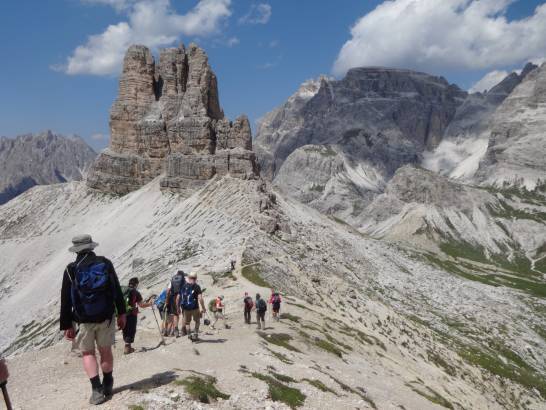
The first scientific study of this mountainous region was carried out by the French geologist Déodat de Dolomieu, for whom the Dolomites are named.
Before this, the range was simply known as the Pale Mountains. Earnest attempts to climb its highest peaks began in the early 19th century, and by the end of the century all of the major peaks had been reached by accomplished mountaineers.
When the Brenner Railway opened in 1867, it allowed travelers the ability to access the Dolomites with much more ease. In the early 20th century, the mountains became a major battleground for World War I, where remnants of the fighting between Austria and Italy can still be seen to this day.
Places such as Monte Piana allow visitors to explore trenches, bunkers, and bridges that were constructed during the war. There’s also an open-air museum on the mountain that provides a thorough education on the history of war in the Dolomites.
WHAT MAKES THE DOLOMITES SPECIAL?
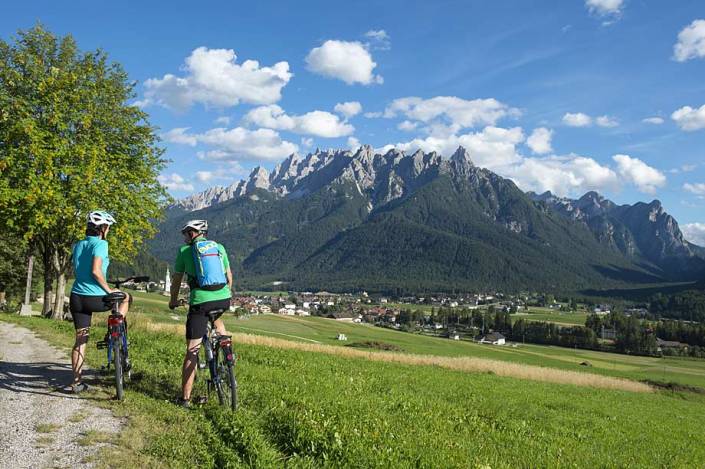
Declared a UNESCO World Heritage Site in 2009, the Dolomites are made up of nine different mountain systems. Nearly 95% of the area is protected by national and regional parks (as well as SCI/SPA conservation status).
There are dozens of established trails that vary in difficulty running throughout these mountains, and each of them offers something unique. No matter where you go, you’ll find stunning landscapes that are begging to be photographed and explored.
To truly appreciate the beauty of the Dolomites, you simply have to hike these trails. You’ll walk through carpets of wildflowers as you make your way through mountain passes, gazing up at sheer cliffs and inspiring pinnacles.
Although hiking the Dolomites will likely be the highlight of your trip, the journey to reach them offers an equally unforgettable experience. You pass through the iconic Italian cities of Milan and Verona. Equally charming are the villages you will experience along the way, such as Villabassa, which is the perfect base for exploring the region.
As you explore national parks such as Dolomiti Bellunesi, you’ll learn more about the natural history of the region by visiting museums such as the Messner Mountain Museum or the Vittorino Cazzetta Museum. Your days will no doubt be action packed, yet revitalizing and relaxing at the same time.
THE NATURAL FEATURES OF THE DOLOMITES
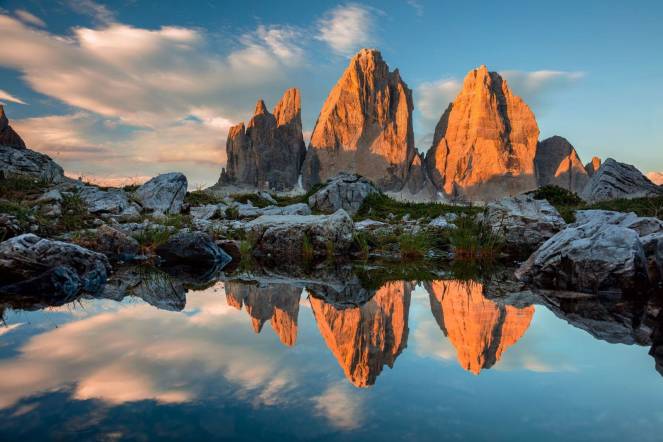
The Dolomites offer an abundance of ecosystems, which are home to a wide array of flora and fauna. Although it’s easy to get lost in the impressive grandeur of the mountains and larger-than-life landscapes, the region offers unique smaller treasures for those that seek them.
Mammals you may encounter during your trip include the chamois, ibex, roe deer, and mouflon sheep. Look to the ground in search of adorable marmots and, if you’re really lucky, you may even spot a brown bear, lynx, or golden jackal.
Scan the skies to spot some of the area’s bird life, which includes golden eagles, pygmy and boreal owls, goshawks, woodpeckers, and bearded vultures. Closer to the ground level, you may come across ptarmigan or capercaillie grouse.
The Dolomites are extremely rich in flora, offering up thousands of plant species that make up about 20% of the flora in all of Europe. Beautiful wildflowers– some of them very rare– come in every color of the rainbow.
But when it comes to the Dolomites, the mountain range’s peaks and passes are the true stars. The following are some of the most notable:
Tre Cime di Lavaredo
The Tre Cime di Lavredo consists of three peaks that rank among the most iconic in the European Alps. A looping half-day trail provides breathtaking views of the peaks and wildflower-covered valleys in summer. The main trail is relatively flat and therefore easy to manage, but there are more difficult (and steep) treks for adventurous types.
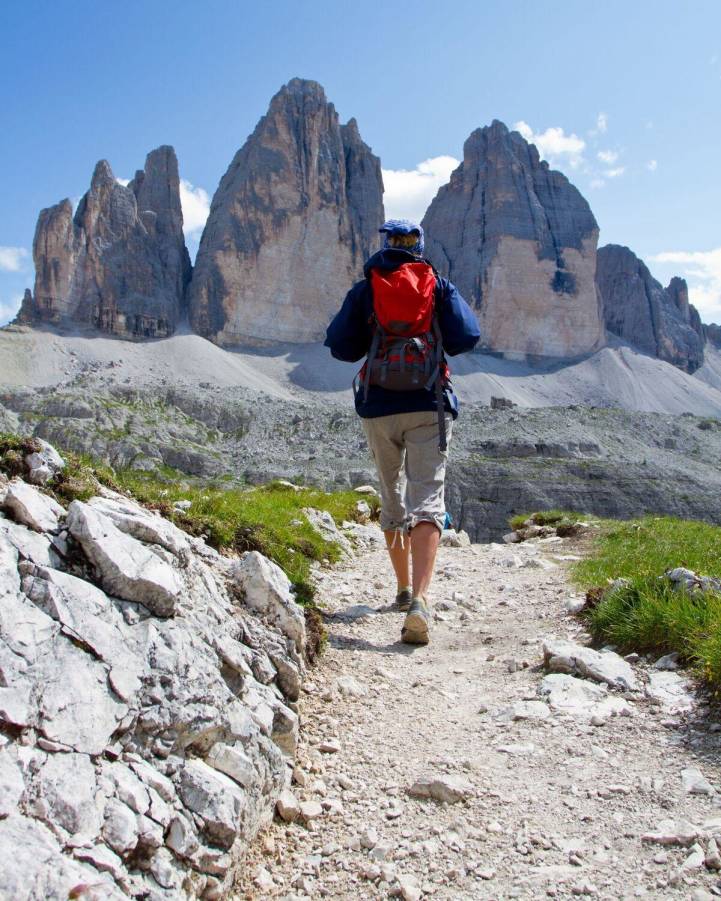
Marmolada
Marmolada is the highest mountain located in the Dolomites, standing at an elevation of nearly 11,000 feet. Here you will find Europe’s highest museum, Marmolada Grande Guerra, and a cable car lift that is split into three sections.
Viewing Platforms
As you hike the Dolomites’ trails, you’ll come upon numerous viewing platforms that offer 360º views of the surrounding landscape. Enjoy nighttime views at the T3 Viewing Platform, where you’ll find night vision goggles installed for viewing nocturnal wildlife. Check out Monte Specie/Strudelkopf Panoramic Balcony, which will give you views of some of the area’s most iconic peaks.
Lago di Braies
Hike the perimeter of this beautiful emerald and turquoise-hued lake, which is surrounded by majestic mountains. Here you’ll find the starting point for the 93-mile hiking trail that runs through the eastern Italian Dolomites, known as Alta Via n. 1. The lake’s water may be a bit too crisp for a swim, but you can take a boat across its fairytale-like waters.

